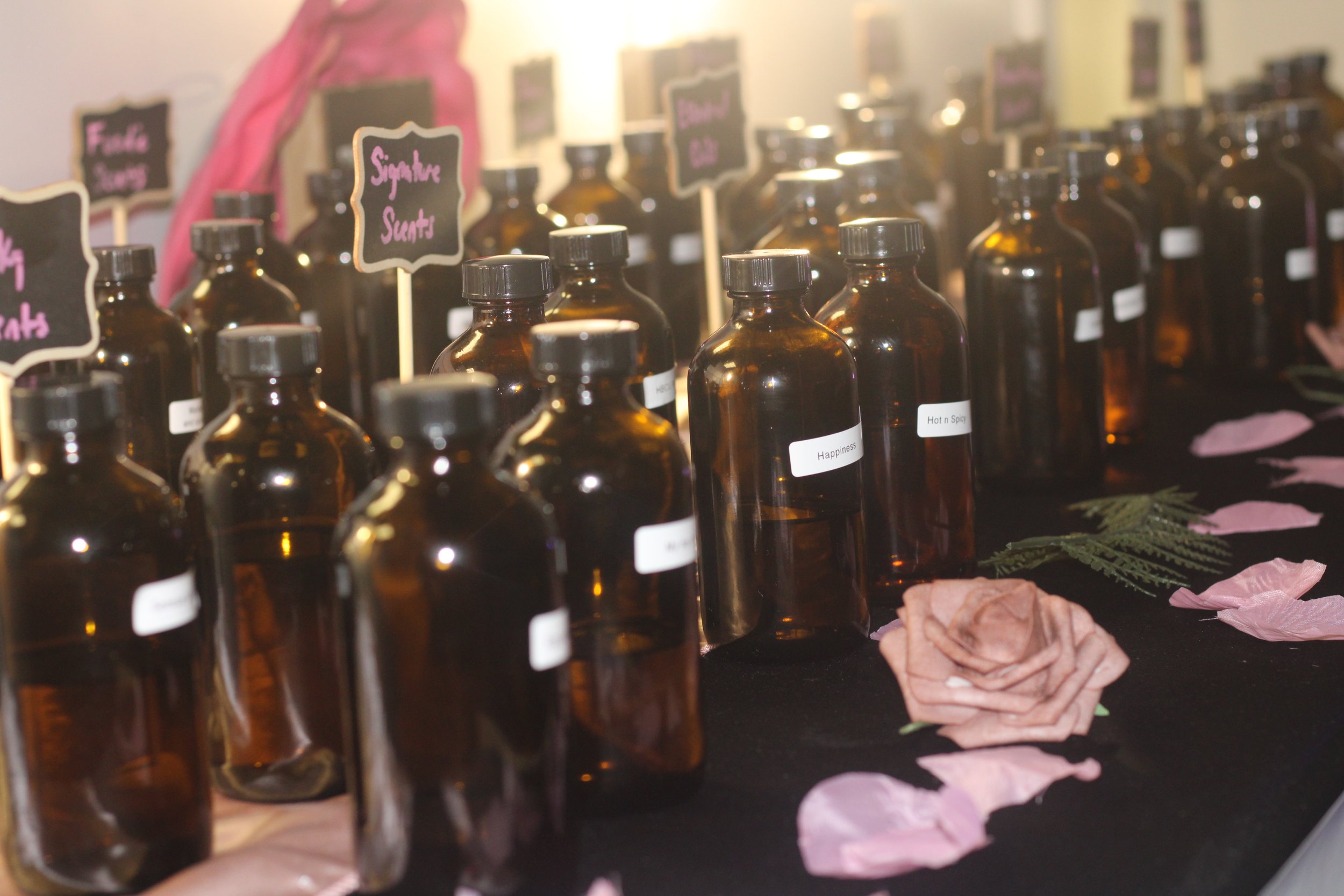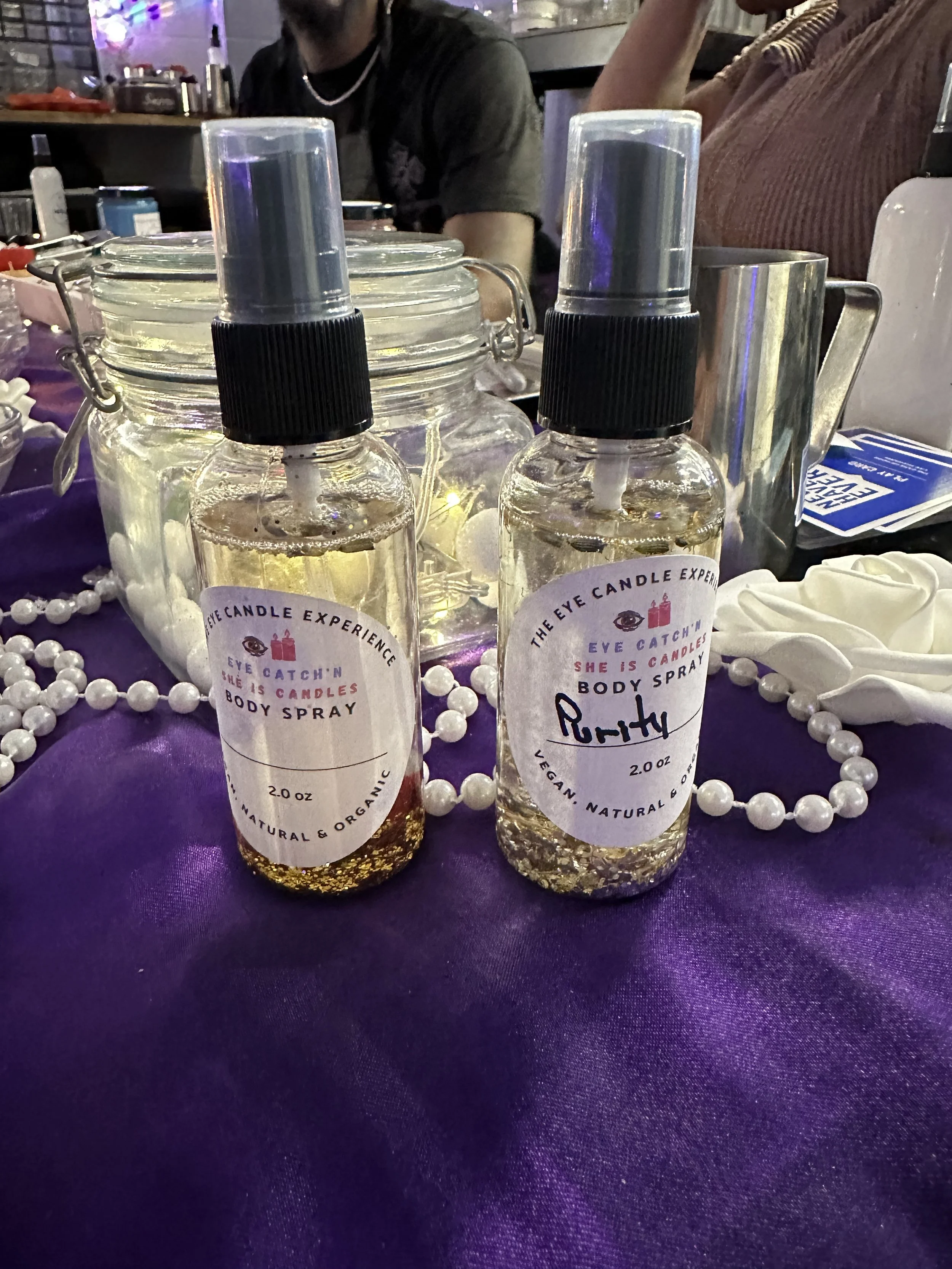Perfume Making Isn't Just a Hobby—It's Science: The Chemistry Behind Your Signature Scent
Variety matters
Discover the fascinating science of fragrance creation and why perfume blending is more complex than you ever imagined…
The Art Meets Science: Understanding Perfume Chemistry
When you walk into Eye Candle Experience's perfume workshop in Birmingham, you're not just playing with pretty bottles and pleasant smells. You're entering a sophisticated laboratory where chemistry, biology, and physics converge to create something truly magical: your perfect signature scent.
Perfume making is one of the oldest forms of applied chemistry, dating back over 4,000 years. What ancient perfumers discovered through trial and error, modern science has explained through molecular structures, volatile compounds, and olfactory receptors. Every drop of fragrance you create is a testament to centuries of scientific discovery.
The Molecular Dance: How Scent Actually Works
Understanding Volatile Organic Compounds (VOCs)
Every fragrance you smell consists of volatile organic compounds—molecules light enough to evaporate at room temperature and travel through the air to your nose. These aren't random particles; they're precisely structured molecules that determine everything from how quickly a scent appears to how long it lingers on your skin.
Top Notes: Small, light molecules (molecular weight 100-160) that evaporate quickly
Examples: Citrus oils (limonene), light herbs (eucalyptol)
Evaporation time: 5-30 minutes
Scientific function: Immediate olfactory impact
Middle Notes: Medium-sized molecules (molecular weight 140-200) that form the heart of your fragrance
Examples: Floral compounds (linalool), spice molecules (eugenol)
Evaporation time: 30 minutes to 4 hours
Scientific function: Core scent stability
Base Notes: Large, heavy molecules (molecular weight 200+) that anchor your fragrance
Examples: Woody compounds (santalol), resinous molecules (benzyl benzoate)
Evaporation time: 4-8+ hours
Scientific function: Longevity and depth
The Neuroscience of Scent: Your Brain on Fragrance
The Olfactory Pathway Explained
When you smell a fragrance during our Birmingham perfume workshops, you're witnessing one of the most direct connections between chemistry and consciousness. Here's the fascinating science:
Molecular Recognition: Odor molecules bind to specific receptor proteins in your nasal cavity
Signal Transduction: These receptors convert chemical signals into electrical impulses
Limbic Processing: Signals travel directly to your limbic system—the emotional center of your brain
Memory Formation: Scent memories are stored alongside emotional and spatial memories
This is why certain fragrances can instantly transport you to childhood memories or evoke powerful emotions. It's not mystical—it's neuroscience.
The Psychology of Scent Preferences
Your fragrance preferences aren't random. They're influenced by:
Genetic variations in olfactory receptors (we each have about 400 different types)
Cultural conditioning and learned associations
Hormonal fluctuations that affect scent perception
Individual body chemistry that interacts with fragrance molecules
Fragrance Chemistry: The Building Blocks of Scent
Essential Oils vs. Synthetic Fragrances: A Scientific Comparison
Natural Essential Oils:
Complex molecular compositions (lavender oil contains over 100 different compounds)
Variable compositions based on growing conditions, extraction methods
Biodegradable and renewable
Limited scent palette but rich complexity
Synthetic Fragrance Molecules:
Precisely controlled molecular structures
Consistent performance and longevity
Access to scents impossible to extract naturally
Often more sustainable than natural harvesting
At Eye Candle Experience, we use both natural and synthetic fragrance components, chosen for their quality, safety, and olfactory properties—not marketing trends.
The Science of Scent Blending: Why Some Combinations Work
Molecular Harmony and Dissonance
Creating a beautiful perfume isn't about randomly mixing pleasant smells. It requires understanding:
Chemical Compatibility: Some molecules enhance each other (synergy), while others compete for receptor sites or chemically react to create unpleasant compounds.
Vapor Pressure Relationships: Molecules with similar vapor pressures evaporate at similar rates, creating harmony in how your fragrance develops over time.
Solubility Principles: Oil-soluble and water-soluble compounds behave differently in formulations, affecting how your perfume projects and lasts.
The Mathematics of Fragrance Formulation
Professional perfumers use precise ratios and calculations:
Concentration calculations for proper dilution ratios
Molecular weight considerations for evaporation patterns
Percentage formulations for balanced scent pyramids
pH considerations for stability and skin compatibility
Advanced Fragrance Science: What We Teach in Our Workshops
Aromatherapy Science: Therapeutic Compounds in Action
The therapeutic effects of aromatherapy aren't just placebo effects—they're based on real molecular interactions:
Linalool (found in lavender): Crosses the blood-brain barrier and affects GABA neurotransmitters, promoting relaxation Limonene (citrus oils): Stimulates dopamine production and has demonstrated anti-anxiety effects Eucalyptol (eucalyptus): Acts as a natural decongestant and cognitive enhancer
Skin Chemistry and Fragrance Performance
Your skin's unique chemistry dramatically affects how fragrances smell on you:
pH levels (typically 4.5-6.5) can alter molecular structures
Skin temperature affects evaporation rates
Natural oils interact with fragrance molecules
Hormonal fluctuations change how you perceive and project scents
This is why we always recommend testing fragrances on your skin during our Birmingham perfume workshops—the science is literally different for every person.
The Future of Fragrance Science
Emerging Technologies in Perfumery
Modern perfume science continues to evolve:
Molecular modeling to predict scent characteristics before synthesis
Biotechnology creating sustainable fragrance molecules through fermentation
Encapsulation technology for controlled scent release
AI-assisted fragrance composition based on preference algorithms
Sustainability Through Science
Scientific advances are making perfumery more sustainable:
Green chemistry principles reducing environmental impact
Biotechnology replacing rare natural materials
Molecular recycling of fragrance waste
Life cycle analysis optimizing ingredient sourcing
Bringing Science to Your Creative Practice
What You'll Learn in Our Birmingham Perfume Workshops
When you join us for a perfume blending experience, you're not just following a recipe—you're learning applied chemistry:
Scent Theory: Understanding how different molecular families interact Blending Ratios: Mathematical principles for balanced compositions Skin Chemistry: How your unique biology affects fragrance performance Quality Assessment: Scientific methods for evaluating fragrance quality and stability
The Professional Difference
Our instructors understand both the artistic and scientific aspects of perfumery. We teach you:
Why certain combinations work (and others don't)
How to adjust formulations for different skin types
The science behind fragrance longevity
Professional evaluation techniques used by master perfumers
Experience the Science Yourself
Understanding the science behind perfume making transforms it from a casual hobby into a sophisticated craft. When you know why molecules behave the way they do, you can create more intentional, beautiful, and personally meaningful fragrances.
At Eye Candle Experience in Birmingham, we believe that knowledge enhances creativity. Our perfume workshops combine hands-on creation with scientific education, giving you both a beautiful custom fragrance and a deeper appreciation for the remarkable science behind every scent.
Ready to explore the fascinating world of fragrance science? Book your perfume blending workshop today and discover how chemistry, biology, and artistry combine to create your perfect signature scent.
Visit eyecandleexperience.com/book-experience to schedule your scientific fragrance adventure.
Eye Candle Experience is Birmingham's premier destination for scientifically-informed perfume workshops, combining expert instruction with premium materials to create educational and inspiring fragrance experiences.
Additional Reading:
"The Science of Smell" - Journal of Chemical Education
"Molecular Structures in Perfumery" - Fragrance Foundation
"Neuroscience of Olfaction" - Nature Reviews Neuroscience
"Green Chemistry in Fragrance" - Royal Society of Chemistry



